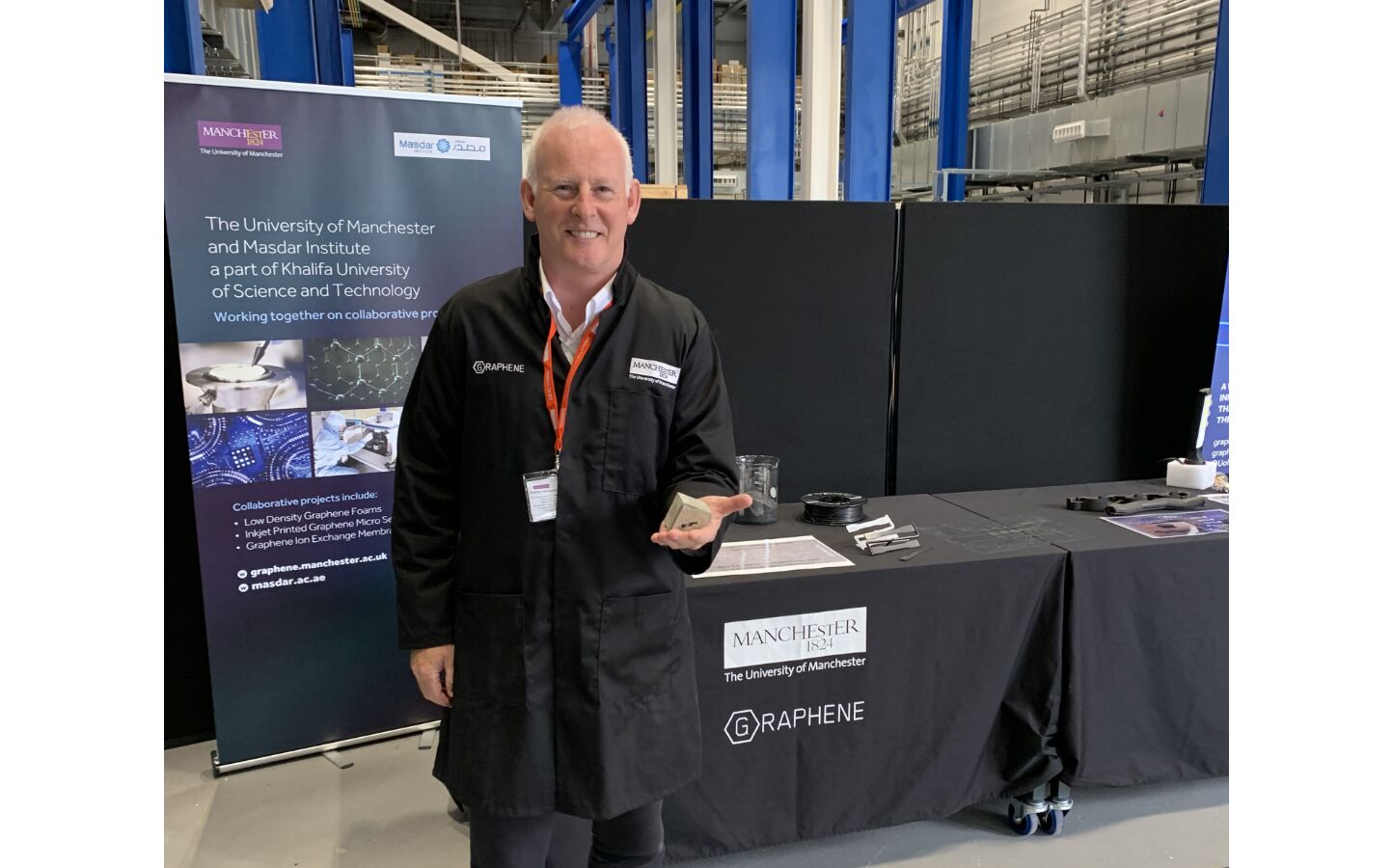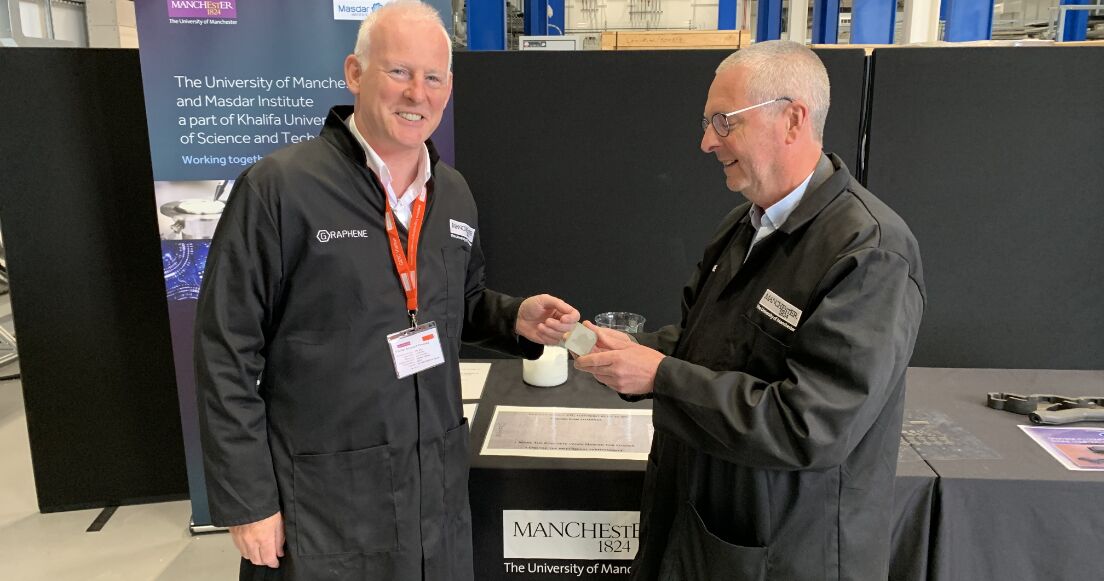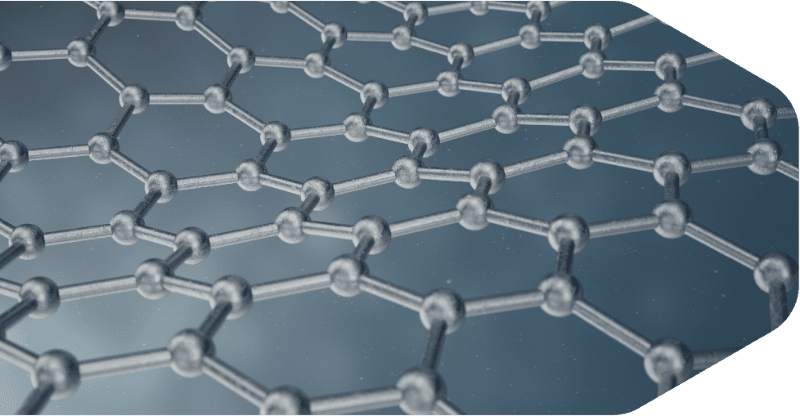
Adrian Nixon and Rob Whieldon of the Nixene Journal with graphene enhanced concrete in the high bay of the Graphene Engineering Innovation Centre (GEIC) at Manchester, UKIt’s not every day you get to hold a piece of future in your hands. Today is an exception. Rob and I work on the Nixene Journal at the new Graphene Engineering Innovation Centre (GEIC) in Manchester, UK and we took a little time out to see the latest innovation. This small grey cube in Rob’s hands is a sample of concrete made with graphene.

The GEIC is where industry meets academia. A GEIC tier one industrial partner is First Graphene Ltd. They have found that adding a fraction of a percent of graphene to cement improves the compressive strength by well over 30%.
A further study of the peer reviewed literature showed an average of 26% improvement in compressive strength across a range of graphene oxide samples and concrete mixes.
This means architects can use at least a quarter less concrete when creating new buildings.
Chatham House is an independent world-leading policy institute. They have examined sources of greenhouse gases, of which carbon dioxide (CO2) is an important component. They examined global cement production and found that every year over 4 billion tonnes of cement are produced, contributing to around 8% of global CO2 emissions.
If the global construction industry was to adopt this technology tomorrow then 25% less cement would need to be made. This in turn would mean a potential reduction in global CO2 emissions of 2% just from this one application.
This is why we think we are holding a piece of the future in our hands. The GEIC really is an exciting place to work.


© Copyright 2025 Nixene Publishing Privacy Policy Cookie Policy Website Design by Pivotal Marketing